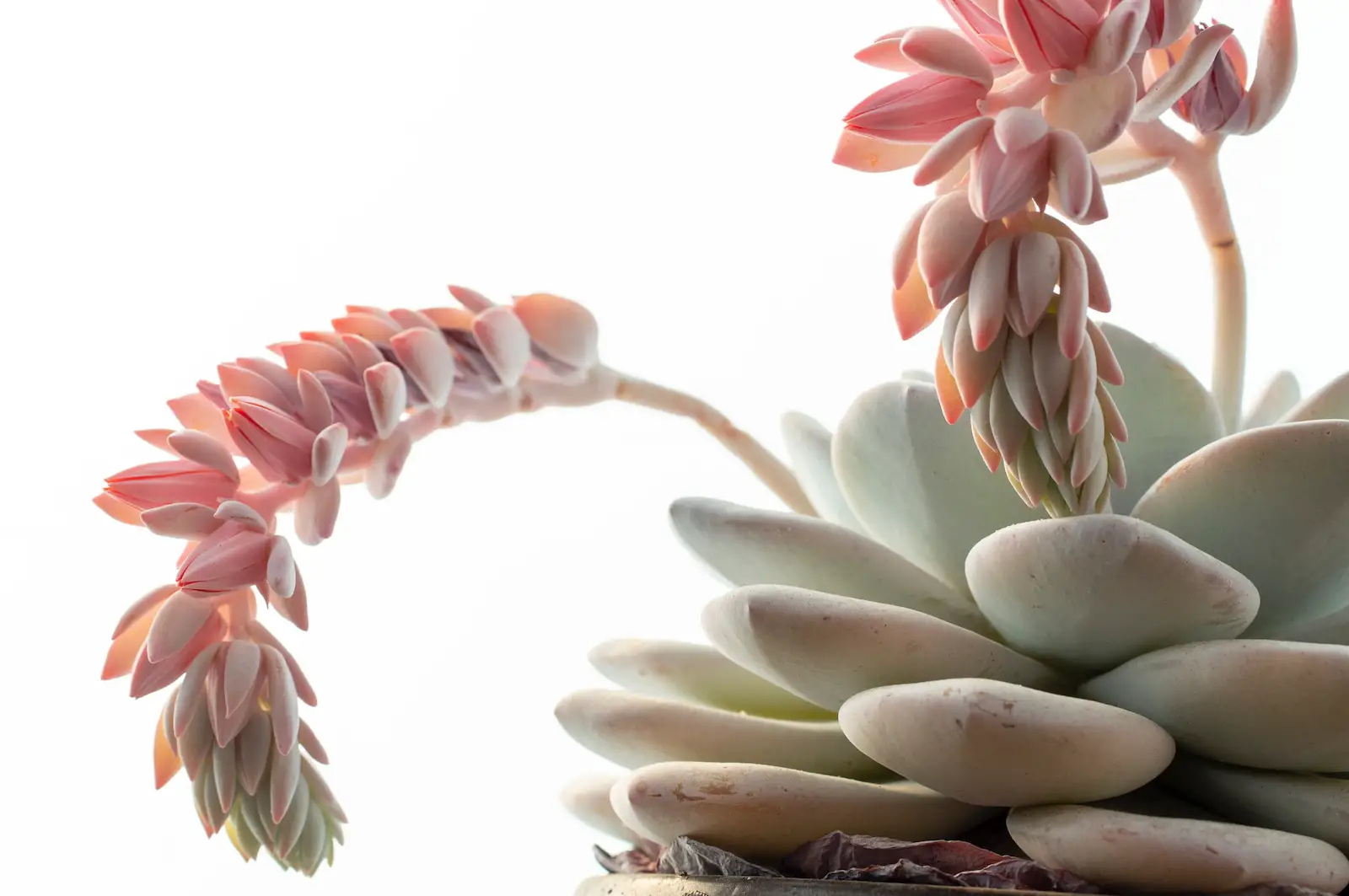Echeveria, a member of the Crassulaceae family, is a genus of succulent plants native to semi-desert regions of Central America, Mexico, and South America. Characterized by rosette-shaped leaves and vibrant flowers, Echeveria is a popular choice among gardeners and houseplant enthusiasts. The striking appearance of its fleshy leaves, which come in various shades of green, blue, pink, and silver, makes it a unique addition to any garden or indoor space.
The care of Echeveria is relatively simple due to its low maintenance requirements and drought tolerance. It’s a perfect choice for those new to gardening or those seeking to add some aesthetic appeal without a lot of fuss. With over 150 recognized species and countless hybrids, Echeveria provides endless options for various settings and preferences.
The name “Echeveria” is derived from the 18th-century Mexican botanical artist, Atanasio Echeverría y Godoy. His significant contributions to botanical illustrations led to the naming of this stunning genus in his honor. Echeveria’s unique forms, diverse colors, and resilience have ensured its popularity among succulent lovers worldwide.
| Attribute | Details |
|---|---|
| Common Names | Echeveria |
| Botanical Name | Echeveria spp. |
| Family | Crassulaceae |
| Plant Type | Succulent |
| Mature Size | 3 to 8 inches in diameter |
| Sun Exposure | Full sun to partial shade |
| Soil Type | Well-draining, sandy soil |
| Hardiness Zones | 9-12 |
| Native Area | Central America, Mexico, South America |
Echeveria Care
Echeveria plants are incredibly forgiving and adapt well to various care conditions. Providing them with well-draining soil and bright sunlight will ensure their thriving growth. Regular monitoring and seasonal adjustments to water and feeding schedules can further enhance their vibrant appearance and overall health.
Watering should be done with caution to avoid over-watering, as it can lead to root rot. A careful balance between moisture and dryness will keep the plant happy. During the growing season, watering should be regular but moderate, allowing the soil to dry between watering. In the dormant season, reducing water significantly will help maintain a healthy plant.
Light Requirement for Echeveria
Echeverias thrive best in bright sunlight, ideally receiving at least 4-6 hours of sunlight daily. While they can tolerate partial shade, inadequate light may cause them to stretch and lose their compact rosette form.
Soil Requirements for Echeveria
A well-draining soil mix with sand or perlite is ideal for Echeveria. Using a commercial cactus or succulent mix or creating your own mixture with regular potting soil and sand can provide the right environment for growth.
Water Requirements for Echeveria
Watering Echeveria requires careful attention. The “soak and dry” method, where the soil is thoroughly soaked and then allowed to dry completely before re-watering, is recommended. Over-watering should be avoided, as it can cause root rot.
Temperature and Humidity
Echeveria prefers a temperature range of 60°F to 75°F (15°C to 24°C). While they can withstand minor frost, protection during extreme cold is advised. They are not particular about humidity and can thrive in average indoor humidity levels.
Fertilizer
Feeding with diluted, balanced liquid fertilizer during the growing season can support robust growth. Monthly feeding or using a slow-release fertilizer at the beginning of the growing season is often sufficient.
Pruning Echeveria
Pruning is not typically necessary for Echeveria but can be done to remove dead leaves or spent flowers. Care should be taken not to damage the healthy leaves.
Propagating Echeveria
Propagating Echeveria can be done through leaf cuttings, offsets, or stem cuttings. This process is quite simple and offers an excellent way to expand your collection.
How To Grow Echeveria From Seed
Growing Echeveria from seed is a slow process, requiring patience and proper care. Seeds should be sown in a well-draining soil mix and kept in a warm, moist environment until germination.
Common Pests & Plant Diseases
Mealybugs
Mealybugs can be treated with insecticidal soap or neem oil.
Fungal Diseases
Over-watering can lead to fungal diseases. Proper watering practices and well-draining soil will prevent this issue.
Common Problems With Echeveria
Leggy Growth
Occurs when the plant receives insufficient light, causing it to stretch.
Root Rot
Often caused by over-watering and can be prevented with proper watering techniques.
Pro Tips
- Avoid watering directly on the rosette, as it can lead to rot.
- Repot every two years or when the plant outgrows its pot.
- Protect from extreme temperatures and harsh direct sunlight.
- Regularly check for pests and remove dead leaves to prevent disease.
- Encourage flowering by providing adequate light and not over-fertilizing.



